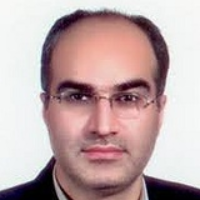Comparative evaluation of antimicrobial activity of three types of materials (reinforced zinc oxide eugenol, MTA and Cem cement) used in primary teeth pulpotomy
Author(s):
Abstract:
Background and Aim
One of the major purposes of pediatric dentistry is to maintain deciduous teeth in anatomical and functional conditions up to their physiological exfoliation and eruption of permanent teeth. Whenever pulp gets involved or exposed to mouth area and microorganisms penetrate into pulp, deciduous teeth needs pulp therapy. In the sterile environment, the exposed pulp tissue is able to repair itself and also to create a dentin bridge, but in the presence of bacteria, development of disease and ultimately death of the pulp will be inevitable. The ideal pulpotomy cement should have good physical and biological properties such as sealing of the remaining pulp tissue, being biocompatible and possessing antibacterial activity. The aim of this study was to compare the antibacterial effect of some usual materials used for pulpotomy in deciduous teeth.
Materials and Methods
In this study, we evaluated the antibacterial activity of materials used in deciduous teeth pulpotomy including Zoliran, Sina Zonalin, Kemdent Zonalin, MTA (OrthoMTA) and CEM Cement against Streptococcus mutans and Lactobacillus acidophilus. Well diffusion test and disk diffusion test and time kill curve were used for antibacterial activity assay. Also, we evaluated stability of antibacterial activity of the materials. The antibacterial activity in disk diffusion and well diffusion test was measured based on the diameter of the zone of inhibition, whereas in time kill curve the optical density of the bacterial suspension was measured. We used analysis of variance (ANOVA) and Tukey’s test at the significance level of 5% .
Results
In well diffussion and disk diffussion tests all of the materials except CEM Cement showed antibacterial activity against Streptococcus mutans and Lactobacillus acidophilus. The largest and smallest zones of inhibition belonged to zoliran and MTA respectively. The results of time kill curve revealed a similar pattern, so that during the experiment period Zoliran, Sina Zonalin, Kemdent Zonalin, MTA and CEM Cement showed the greatest effects in both groups of bacteria respectively.
Conclusion
Reinforced ZOE groups had the greatest effect in inhibition of growth of S.mutans and L.acidophilus compared to MTA and CEM Cement. Thus, use of Zoliran, Sina and Kemdent Zonalin cements in pulpotomy of deciduous teeth can be useful in controlling bacterial growth and achieving success in pulpotomy.Keywords:
Language:
Persian
Published:
Scientific Journal of Kurdistan University of Medical Sciences, Volume:23 Issue: 6, 2019
Pages:
37 to 46
magiran.com/p1933947
دانلود و مطالعه متن این مقاله با یکی از روشهای زیر امکان پذیر است:
اشتراک شخصی
با عضویت و پرداخت آنلاین حق اشتراک یکساله به مبلغ 1,390,000ريال میتوانید 70 عنوان مطلب دانلود کنید!
اشتراک سازمانی
به کتابخانه دانشگاه یا محل کار خود پیشنهاد کنید تا اشتراک سازمانی این پایگاه را برای دسترسی نامحدود همه کاربران به متن مطالب تهیه نمایند!
توجه!
- حق عضویت دریافتی صرف حمایت از نشریات عضو و نگهداری، تکمیل و توسعه مگیران میشود.
- پرداخت حق اشتراک و دانلود مقالات اجازه بازنشر آن در سایر رسانههای چاپی و دیجیتال را به کاربر نمیدهد.
In order to view content subscription is required
Personal subscription
Subscribe magiran.com for 70 € euros via PayPal and download 70 articles during a year.
Organization subscription
Please contact us to subscribe your university or library for unlimited access!


